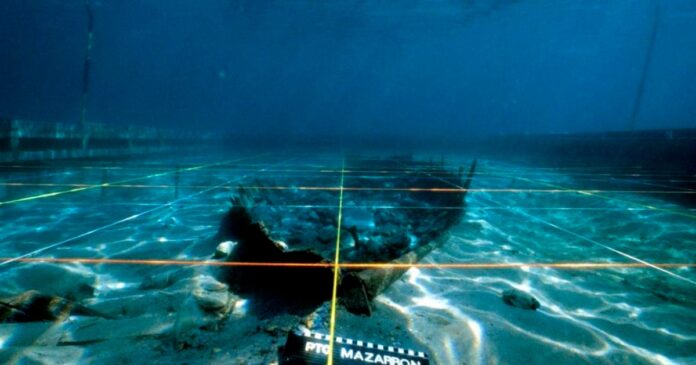Spanish archaeologists have successfully removed a 2,600-year-old shipwreck from waters off the country’s southeastern coast, two decades after the relic was initially found, officials said.
The ancient Phoenician shipwreck dates back to the 7th century B.C.E. It was discovered in 1994 off the coast of Murcia in southeastern Spain, near the town of Mazarrón, according to Spain’s Ministry of Culture.
Now called the Mazarrón II, this shipwreck was one of two located in that same general area. The first, called Mazarrón I, was initially located in 1993, lifted from the water in June 1995, and put on display at Spain’s National Museum of Underwater Archaeology in 2005 after undergoing years of conservation treatments, the museum said.
Spanish National Museum of Underwater Archaeology
Mazarrón II is of particular interest to archaeologists and researchers because it is one of only a few Phoenician-era shipwrecks discovered largely intact, said Carlos de Juan, the director of the excavation project, in a video shared by the University of Valencia. The university partnered with the regional culture ministry in Murcia to carry out the excavation.
A team of 14 specialists worked with de Juan to lift the shipwreck from the sea in less than two months, beginning the project Sept. 13 and finishing Nov. 7. Video shows divers carrying wooden fragments of the wreck to the surface in pieces.
Phoenicia was an ancient civilization along the eastern Mediterranean coast, in the area of modern-day Lebanon, Syria and Israel, which existed from about 1500 to 300 B.C.E. Although historians say Phoenicians thrived for a time on trade and developed an alphabet that formed the basis for the ones later produced by ancient Greece and Rome, many traces of the civilization were considered lost until the 20th century.
Artifacts like Mazarrón II can help shed light on Phoenician culture, said de Juan. He noted in his comments to the University of Valencia that little is known about Phoenician naval construction, even now, despite the wealth of information about ships built nearby in the Mediterranean by the ancient Greeks.
“Therefore, this wreck is a very important contribution to this area of study,” de Juan said. He noted that elements of the Mazarrón II are similar to construction designs seen in cultures throughout the surrounding region, but some are distinctive and mysterious, at least for now.
Each piece of the shipwreck has been transferred to a laboratory at the Museum of Underwater Archaeology, in southern Spain. The lab will work carefully to conserve its remains, in a process that will likely take several more years.
